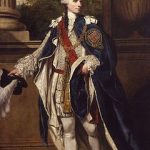When James II made his Catholicism too ostentatious for seventeenth century Protestant politicians to stomach, a successful conspiracy was made to remove him from the throne he had inherited from his brother Charles II. Among the conspirators was John Duke of Marlborough, who had been raised to the dizzy heights he attained from being a country squire. Most of the raising had been done by James II. Do not put your faith in country squires who rise to become Dukes and have colossal palaces (Blenheim) built for them by ‘a grateful nation’. The conspirators then invited a Dutchman to come to Britain and become William III, which he did, albeit with some reluctance. He was a firm Protestant descending from Mary Queen of Scots, a Stewart, and was married to another Mary, Mary of England. This was considered a good enough claim by the conspirators, and so the Dutchman became King of England,Scotland and Ireland. Silly weak James went without much pushing into exile, where he stayed.
Perhaps the oddest thing about William of Orange is his name. He was the Statholder of Holland, but the title ’Orange’ is not Dutch. It comes from the ruling house of Orange-Châlons, a small principality in southern France.
The tiny city of Orange grew up around its Roman buildings, which include a semi-circular theatre and an arc de triomphe. In the eleventh century it became literally a county ruled by a count, but from the twelfth century Orange’s counts were vassals of the Holy Roman Emperor (q.v.) which as readers of this blog know was not holy, Roman or an empire. Notwithstanding this peculiarity, the rulers of Orange began to style themselves ‘Prince’.
Circa 1530 the related house of Nassau-Châlons succeeded to the title. In 1554 William of Nassau-Dillenburg became the Prince of Orange, and later William I (known as ‘The Silent’) a Statholder in the Netherlands, also known as The Low Countries.
Until the late eighteenth century the dynasty of Orange played a continuing part in the policies of the United Provinces, but the Principality was taken over by the Sun King himself, Louis XIV in 1672 and incorporated into France by that celebrated Treaty of Utrecht (1713) which has since caused so much headache and heartache. The title of Prince of Orange was retained by that William III who became King of England by invitation of the conspirators in 1689. In Britain he reigned jointly with his wife Mary, in a partnership which became known as William and Mary; this has been used to denote a special architectural style.
Mary, interestingly enough for observers of royal antics and international politics – was the daughter of the deposed monarch, King James II – though she claimed of course not to be Catholic.
The Ducs de Orléans represent several dynasties of French royal princes, at least two of which managed to achieve tremendous historical importance – Valois-Orléans and Bourbon-Orléans.
The title Duke of Orléans was always used by young princes in the French royal family from the fourteenth century. In 1392 Charles VI bestowed the duchy on his brother Louis, first of the Valois-Orléans. It was this Louis’ grandson who became Louis XII of France, great-grandfather of François I. The Valois-Orléans came to an end with the death of Henry III of France in 1589.
Philippe, first of the Bourbon-Orléans dynasty was Regent of France in 1715 during the minority of Louis V. It must be emphasised that during the eighteenth and nineteenth centuries the Orléans branch of the royal family was to cause much bother and torment because they sided in true liberal style with opponents of Bourbon absolutism. Philippe’s great-grandson Louis Philippe Joseph a.k.a. ‘Philippe Égalité’ succeeded to the title of Orléans in 1785. He supported and encouraged the French Revolution from the beginning. In June 1789 he organised the group of nobles who joined The Third Estate. He even voted for the execution of Louis XVI in 1792. This was understandedly unpopular with his own eldest son, Louis-Philippe, who got his father arrested with the other Bourbons, and despite his posturings, he and they were duly guillotined.
After the July Revolution of 1830, Louis-Philippe was chosen as King; he ruled as a purely constitutional monarch until the Revolution of 1848.
Most historians agree that having an Orléans as a younger brother was hardly ever a good thing for any French King. The title and family lives on however, in both French and Spanish families, Bourbon or Borbón.










Leave A Comment